#SHANGHAI II
Explore tagged Tumblr posts
Text

UK 1998
#UK1998#ACTIVISION#SHINY ENTERTAINMENT INC.#ACTION#STRATEGY#SIMULATION#ADVENTURE#RPG#NETWORK#IBM#DARK REIGN THE FUTURE OF WAR#EARTHWORM JIM#ZORK NEMESIS#INTERSTATE 76#NETSTORM ISLANDS AT WAR#RETURN TO ZORK#SPYCRAFT THE GREAT GAME#PITFALL THE MAYAN ADVENTURES#A10 CUBA#SHANGHAI II#MECHWARRIOR 2 31ST CENTURY COMBAT#BLOOD OMEN LEGACY OF KAIN#MECHWARRIOR 2 MERCENARIES#CLASSIC TEXT ADVENTURE MASTERPIECES
21 notes
·
View notes
Text

#063
#photography#photoblog#photographers on tumblr#urban photography#street photography#kodak brownie starmatic ii#film photography#127 film#black and white#shanghai gp3 100
9 notes
·
View notes
Text

ファミ��ーマージャン2上海への道 ミンリンメイ
#ファミリーマージャン2上海への道#ミンリンメイ#NES#Family Mahjong II: Shanghai e no Michi#Family Mahjong II#Shanghai e no Michi#Arcade game#ファミコン#Famicom#ファミリーコンピュータ#Family Computer#ナムコ
13 notes
·
View notes
Text
for some reason obsessed with the idea of cowboy geist, whole geistverse cowboy au that is just a spaghetti western
#geist angie and adam are all cowboys#bianca is a noble woman turned cowboy#dan is the sheriff and luci is like whatever the male version of barmaid is#im rewatching shanghai noon lmao#i love cowboys <3#klepto talks to himself#klepto rants about ocs#geist ii [oc]
3 notes
·
View notes
Text
#Burrows VN#Hiro Burrows#虐め#Caleb's Seduction#In the Woods Somewhere#River Lea#Bouquet#Every Single Night#My Body Is a Cage#Owari No Kisetsu#In Your Arms#The Garden of Everything#The Wretched Automatons#Modal Shanghai#Battersea#The Witch of Hemwick#Requiem Aranea#Atom Dance#Prick! Goes the Scorpion's Tale#Cruel Dilemme II#Bibo No Aozora#Woods#Burn the Witch#andata#Sukiyaki#Follow Me#Ashes of Dreams#Spotify
2 notes
·
View notes
Photo
Shanghai Taken on August 13, 2017 Photographer: Jennifer Bin

my love
831 notes
·
View notes
Text

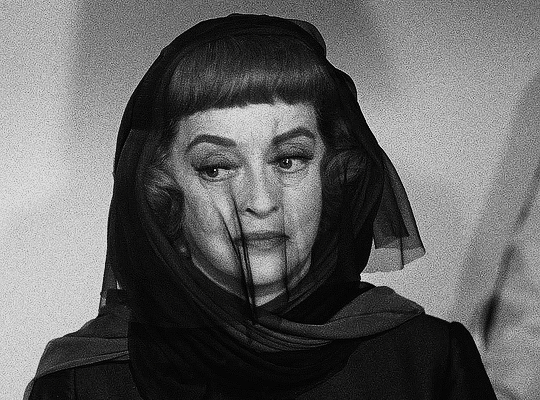







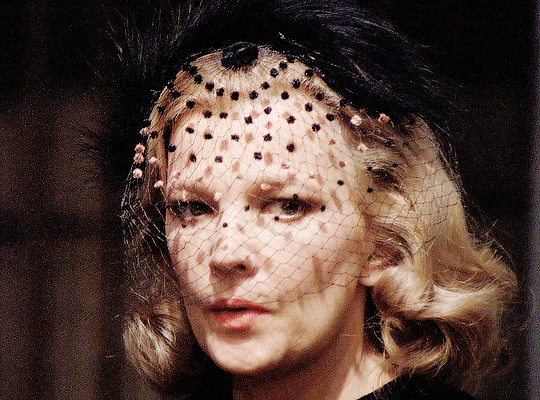
PART I | PART II
Beetlejuice (1988) Dead Ringer (1963) Cinderella (2015) 101 Dalmatians (1996) Hollow Triumph (1948) Black Swan (2010) Vanity Fair (2004) Shanghai Express (1932) Dune: Part Two (2024) Opening Night (1977)
#filmedit#filmgifs#moviegifs#dailyflicks#fyeahmovies#userladiesblr#mygifs#userladiesofcinema#beetlejuice#dead ringer#cinderella 2015#101 dalmatians#hollow triumph#black swan#vanity fair#shanghai express#dune part two#opening night#winona ryder#bette davis#cate blanchett#glenn close#joan bennett#natalie portman#reese witherspoon#marlene deitrich#florence pugh#gena rowlands#may do a part three but not sure
4K notes
·
View notes
Text

Arriving in Metropolis! Scene 10
#art#inanimate insanity#object show art#objectshow#object show#artwork#metropolis#christmas#night#shanghai#dubai#ii sprinkles#sprinkles ii#iisprinkles#sprinklesii#iii sprinkles#sprinkles iii#iiisprinkles#sprinklesiii#objectshow sprinkles#object show sprinkles#inanimate insanity sprinkles#sprinkles inanimate insanity#inanimate insanity invitational sprinkles#sprinkles inanimate insanity invitational
1 note
·
View note
Text
The Shanghai Auto Exposition 2023 and The Ethics of Cobalt
With the beginning of this year’s Shanghai auto exposition in 2023, the predominant cars and other vehicles on offer have mainly been electric vehicles (EV) and hybrid vehicles, which mainly use cobalt to create electric batteries that run the vehicle.
With the beginning of this year’s Shanghai auto exposition in 2023, the predominant cars and other vehicles on offer have mainly been electric vehicles (EV) and hybrid vehicles, which mainly use cobalt to create electric batteries that run the vehicle. In the exposition, car companies presenting their new vehicles, such as BMW and Nissan showcasing new vehicles, particularly electric and hybrid…
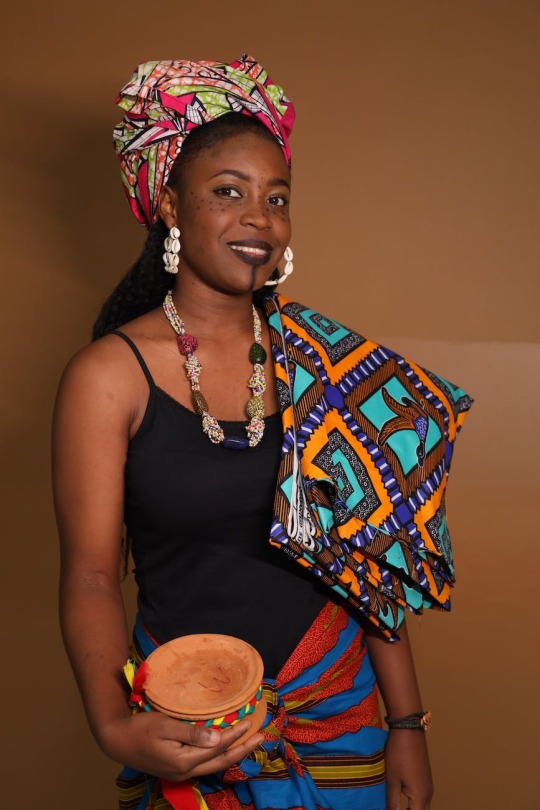
View On WordPress
#BMW#Cobalt#Cobalt Red How the Blood of the Congo Powers Our Lives#Ethics#Ethics of Cobalt#Joe Rogan#Joe Rogan Experience Podcast#Leopold II of Belgium#Nissan#Shanghai Auto Exposition#Siddharth Kara#Zambia
0 notes
Note
I'm boggled. This isn't the same thing as in the letter, is it?

Thank you so much for the ask!! Good job on spotting the difference!
Posting the letter again for reference:

So you're right, on the rock it reads 張仲仁 (Cheung Chong Yan in standard cantonese romanisation), while on the envelope the name is 張仲文 (Cheung Chong Man). Hergé’s real life Chinese friend is 張充仁 (Cheung Chong Yan), so the romanisation would be the same as the name in your ask.
HOWEVER, those are just romanisations (which are less accurate but easier for foreigners to pronounce). Their actual pronunciations in cantonese (spoken in Hong Kong) / mandarin (spoken in mainland China including Shanghai) are different:
張充仁 = Tcheung Chong Yun* / Zhang Chongren
張仲文 = Tcheung Tchong Mun / Zhang Zhongwen
張仲仁 = Tcheung Tchong Yun / Zhang Zhongren
* 'Tch-' is similar to J sound; '-ong' is OW-ng; '-un' as in under
As you can see, there’s a bit of a mix and match. But I think it makes sense to change the first word in his given name into 仲 given that the story says Chang is from HK, because we seldom use 充 in our names (perhaps more common in mainland China, not 100% sure).
Another fun fact for you on the meanings of those given names~
充 = full of
仲 = still be (only in cantonese)
仁 = love for all beings/ benevolence
文 = cultured/ gentle
Both 仁 and 文 are commonly used here across different generations and genders. So I think both translations are pretty nice!!
Also, I just spotted that the stamps in the top right corner are of Queen Elizabeth II and King George VI:


Not so good at maintaining consistency but good attention to detail, I must say :)
455 notes
·
View notes
Text
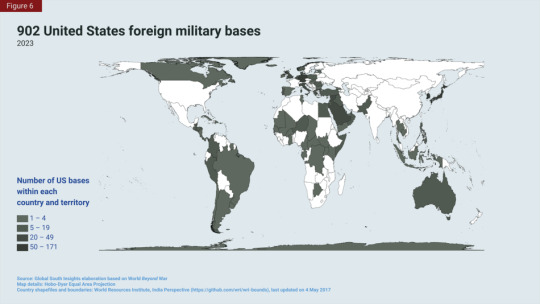
"In the twenty-first century, nothing is more indicative of U.S. empire than the global reach of the U.S. military. Much of this power comes from its approximately 800 military bases located in around eighty countries, accounting for about 95 percent of the world’s foreign military bases. No other country comes close to the U.S. level of worldwide military control. ... The United States probably has more military bases than any other empire in history, yet most Americans remain largely ignorant of their numbers and location. The history of these bases is an imperial history, tied to war, occupation, and military expansion. Wherever the U.S. military has gone bases have usually followed, giving the United States an ongoing presence long after the war or occupation is over.
The creation of bases has accompanied each wave of U.S. expansion. Military forts enabled continental conquest—255 in total—which functioned as foreign bases on land that was often still controlled by Native peoples. These forts operated as the military outposts of settler-colonialism and were targeted by Native peoples as violations of territorial integrity. The War of 1898 and subsequent occupation of overseas colonies resulted in a global basing system, and by 1938 the United States had fourteen military bases outside its continental borders in Puerto Rico, Cuba, Panama, the Virgin Islands, Hawaii, Midway, Wake, Guam, the Philippines, Shanghai, the Aleutians, American Samoa, and Johnston Island. ... The explosion of foreign bases during World War II would be followed by surges during the Korean War, the War in Vietnam, and the Wars in Afghanistan and Iraq, showing that wars and occupations continue to expand U.S. territory, even if the form of those acquisitions has shifted since the days of settler-colonialism and annexation. The contemporary number, which hovers around 800 to 900, is still an impressive network that places the military within striking distance of every spot on the globe. Historian Bruce Cumings calls the modern form of U.S. empire an 'archipelago empire,' small islands of U.S. control from which power can be projected anywhere in the world. It has become increasingly difficult to tell where the boundaries of the United States begin and where they end.
... For most U.S. citizens these bases are either invisible or accepted as a natural part of our national security apparatus. David Vine argues that Americans 'consider the situation normal and accept that US military installations exist in staggering numbers in other countries, on other peoples’ land. On the other hand, the idea that there would be foreign bases on US soil is unthinkable.'"
Stefan Aune, "American Empire," in At War: The Military and American Culture in the Twentieth Century and Beyond, 2018
Map source
654 notes
·
View notes
Text

UK 1998
#UK1998#ACTIVISION#ADVENTURE#ACTION#SIMULATION#RPG#NETWORK#IBM#HEXEN II#NETSTORM ISLANDS AT WAR#HEAVY GEAR#BLOOD OMEN LEGACY OF KAIN#ZORK GRAND INQUISITOR#EARTHWORM JIM#SHANGHAI II#MECHWARRIOR 2 31ST CENTURY COMBAT#INTERSTATE 76#MECHWARRIOR 2 MERCENARIES#ZORK NEMESIS#A10 CUBA#DARK REIGN THE FUTURE OF WAR
14 notes
·
View notes
Text

#055
#photography#photoblog#photographers on tumblr#street photography#urban photography#kodak brownie starmatic ii#shanghai gp3 100#127 film#black and white#black and white photography
6 notes
·
View notes
Text
Honoring Dr. Chien-Shiung Wu: The First Lady of Physics 🥼⚙🔭
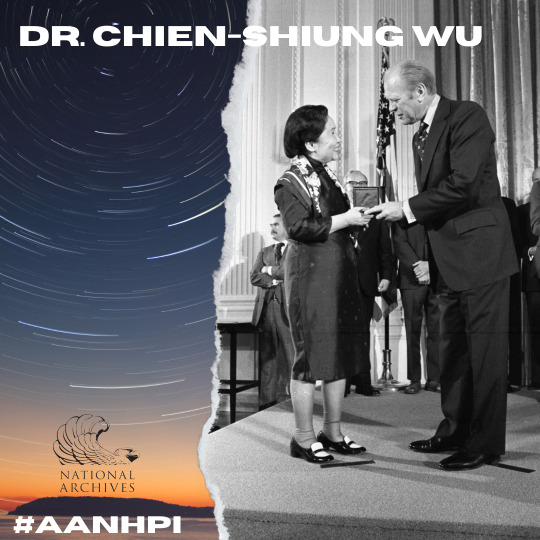
As we celebrate Asian American, Native Hawaiian, and Pacific Islander Heritage Month, let’s take a moment to appreciate Dr. Chien-Shiung Wu, a physicist who made considerable contributions to nuclear physics and worked on the Manhattan Project during World War II.
Early Life and Education
Dr. Chien-Shiung Wu was born on May 31, 1912, in a small town near Shanghai, China. Her father was big on education, especially for girls, which was uncommon at the time. Wu went to National Central University in Nanjing to study physics and later moved to the United States for further studies. She got her Ph.D. in physics from the University of California, Berkeley, in 1940.

https://catalog.archives.gov/id/28883982
Big Contributions to Physics
During World War II, Wu joined the Manhattan Project. She helped develop the atomic bomb by figuring out how to enrich uranium and study radioactive isotopes. Her most famous work was in 1956, when she proved that the law of parity conservation doesn’t hold in weak nuclear interactions. This was an important advancement for physics and earned her colleagues, Tsung-Dao Lee and Chen-Ning Yang, the Nobel Prize in Physics in 1957. Sadly, Wu didn’t get the Nobel recognition even though her experiment was crucial.

Legacy and Recognition
Dr. Wu’s work earned her the nickname "The First Lady of Physics." She received many awards, including the Comstock Prize in Physics and the National Medal of Science in 1990. Besides her scientific work, Wu was a big advocate for women in science and education, encouraging young women to pursue STEM careers. During her career Dr. Wu also taught at Princeton and Columbia Universities. She received the National Medal of Science from President Ford on October 18, 1976, “for her ingenious experiments that led to new and surprising understanding of the decay of the radioactive nucleus.“
Explore More About Dr. Chien-Shiung Wu
To learn more about Dr. Chien-Shiung Wu’s life and work, check out these resources from the National Archives:
The Manhattan Project
Women in STEM
Asian American, Native Hawaiian, and Pacific Islander Heritage Month
As we celebrate Asian American, Native Hawaiian, and Pacific Islander Heritage Month, let’s remember Dr. Wu’s contributions and how she paved the way for future scientists. Her story is a reminder of the importance of perseverance and the pursuit of knowledge.
#Chien-Shiung Wu#Manhattan Project#Science#AANHPI#Asian American#Pacific Islander#Women’s History#national archives#history#archives
218 notes
·
View notes
Text





MAN CRUSH MONDAY
AARON TAYLOR-JOHNSON
Aaron Perry Taylor-Johnson was born June 13, 1990 in High Wycombe, England. The 34-year-old is actor is best known for his roles as Dave Lizewski in the films Kick-Ass and Kick-Ass 2 and Pietro Maximoff in Captain America: The Winter Soldier and Avengers: Age of Ultron. His filmography includes Shanghai Knights, The Illuisonist, Anna Karenina, Godzilla, Nocturnal Animals, Outlaw King, A Million Little Pieces, Tenet, The King's Man, Bullet Train, and The Fall Guy. Aaron can currently be seen in Nosferatu and Kraven the Hunter. His upcoming films include 28 Years Later, Fuze, and 28 Years Later Part II: The Bone Temple. Aaron is 5 feet and 10 inches tall.
#mcm#mcm 2024#man crush#man crush monday#man crush mondays#aaron taylor johnson#dave lizewski#kickass#pietro maximoff#avengers age of ultron#kraven the hunter#nosferatu#gemini
74 notes
·
View notes
Text

Happy Feast Day
Saint Andrew Kim
1821-1846
Feast Day: September 20
Patronage: Korea
Saint Andrew Kim was the first native-born Korean Catholic priest. He was baptized at 15, studied for the priesthood in Macau, and was ordained in Shanghai. St. Andrew was then sent back to Korea to preach, evangelize and arrange travel for more missionaries. This was during the Joseon Dynasty when Christianity was suppressed for fear of foreign influences. He was then captured, tortured, and beheaded for his faith. Pope St. John Paul II canonized St. Andrew Kim and 103 Korean martyrs in 1984
Prints, plaques & holy cards available for purchase here: (website)
60 notes
·
View notes